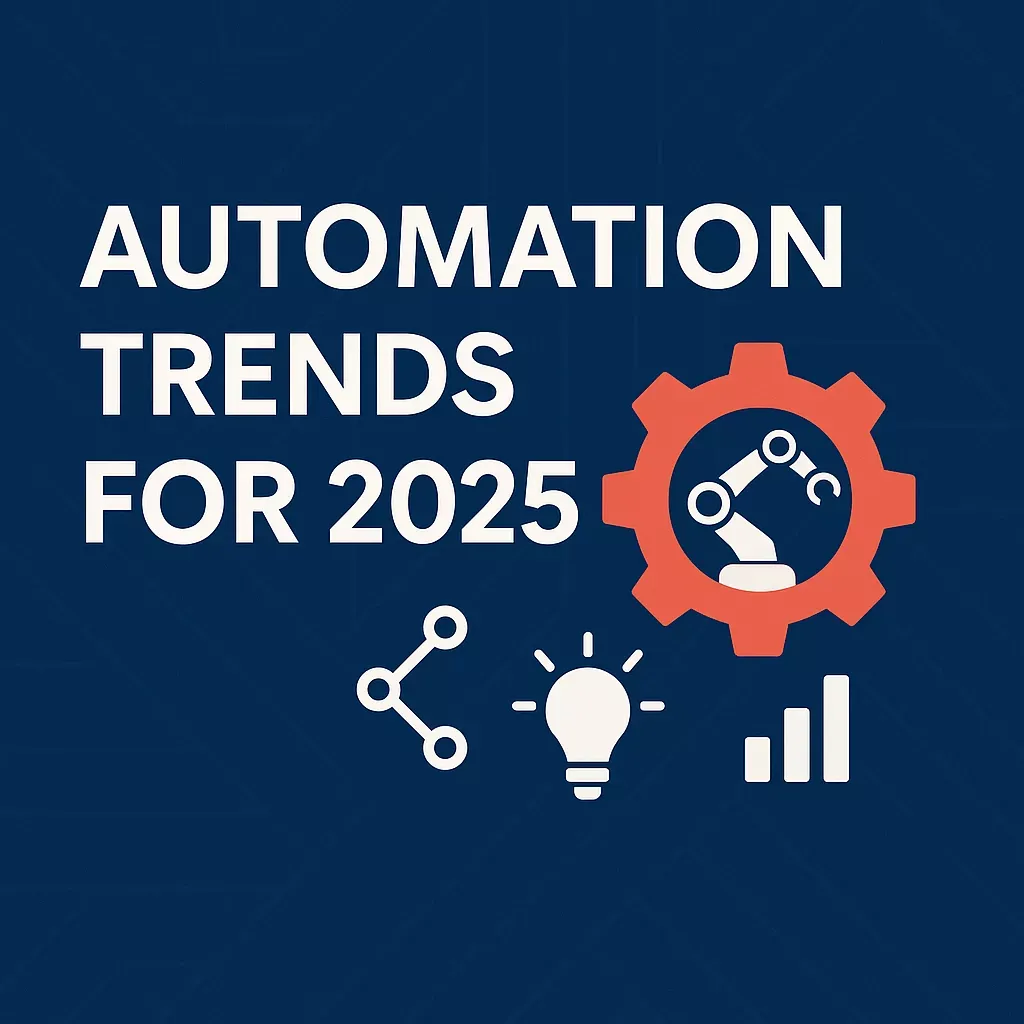Automation Trends to Watch in 2025
As technology continues to advance, automation is playing an increasingly significant role in transforming industries. In 2025, several key trends are expected to shape the automation landscape:

As technology continues to advance, automation is playing an increasingly significant role in transforming industries. In 2025, several key trends are expected to shape the automation landscape:
Plug & Produce Solutions
Standardized automation solutions, known as Plug & Produce, are gaining popularity due to their ease of implementation and immediate impact. These systems allow companies to optimize processes quickly without lengthy integration, making automation more accessible, especially for small and medium-sized enterprises.
Enhanced Human-Cobot Collaboration
Collaborative robots (cobots) are becoming more advanced, with improved sensors and software enabling safer and more precise interactions with human workers. This advancement allows for the automation of complex tasks while ensuring employee safety and increasing overall productivity.
Food-Grade Cobots
In the food industry, cobots designed to meet strict hygiene and safety standards are being introduced. These robots feature food-safe materials and comply with certifications such as NSF/ANSI 169, making them suitable for tasks in food processing environments.
Smart Data Integration
Integrating data from various sources, including sensors and business software, enables real-time insights and better decision-making. This holistic approach helps align production processes with market demands, reduce waste, and enhance sustainability.
Vision and AI for Quality Control
Advancements in vision technology and artificial intelligence are making quality control more efficient and cost-effective. AI-powered systems can quickly detect defects and optimize production processes, ensuring higher product quality and consistency.
Augmented Reality (AR) for Support
AR is emerging as a valuable tool in automated environments, providing workers with real-time information and guidance. This technology enhances training, maintenance, and troubleshooting processes, leading to increased efficiency and reduced downtime.
Predictive Maintenance
Utilizing data analytics and machine learning, predictive maintenance allows companies to anticipate equipment failures before they occur. This proactive approach minimizes unplanned downtime and extends the lifespan of machinery.
Modular Production Lines
Flexible and modular production systems enable manufacturers to adapt quickly to changing demands. By reconfiguring production lines with minimal effort, companies can introduce new products faster and respond to market shifts more effectively.
AI-Driven Process Optimization
Artificial intelligence is being used to analyze and optimize complex processes across various industries. AI algorithms can identify inefficiencies, suggest improvements, and automate decision-making, leading to enhanced performance and reduced operational costs.
Sustainable Automation Practices
Sustainability is becoming a central focus in automation strategies. Companies are implementing eco-friendly technologies and processes to reduce energy consumption, minimize waste, and promote environmental responsibility.
Conclusion
These trends highlight the ongoing evolution of automation and its growing impact on various sectors. By embracing these developments, businesses can enhance efficiency, adaptability, and competitiveness in the rapidly changing technological landscape.
References
[1] https://www.wiredworkers.io/blog/automation-trends-for-2025/